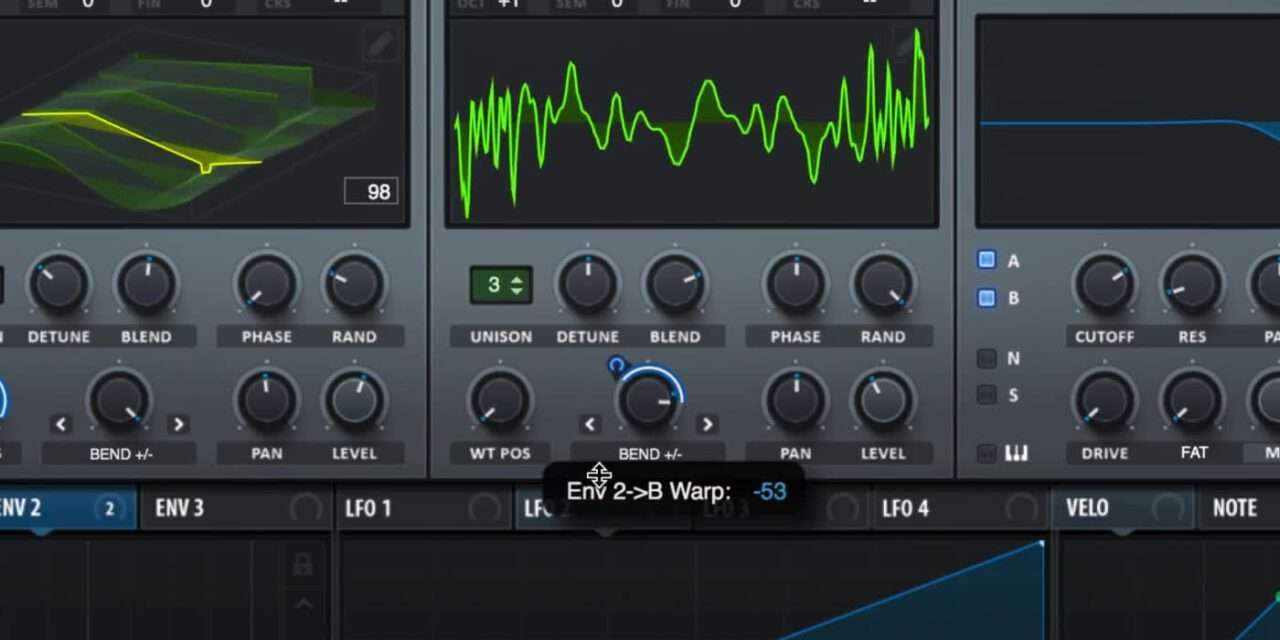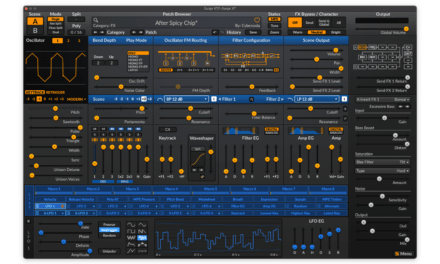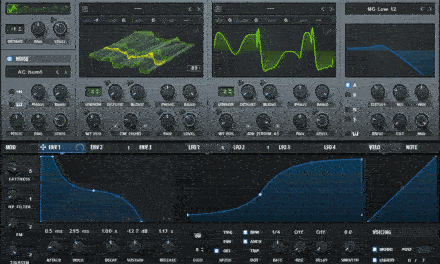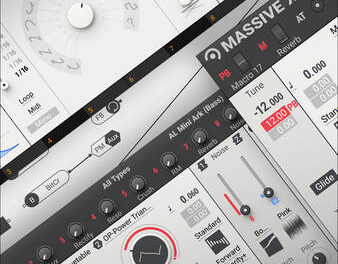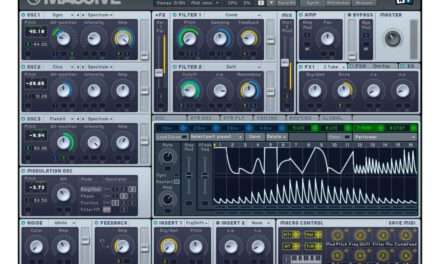In the world of software synthesizers, few tools have made as significant an impact as Serum by Xfer Records. Since its release in 2014, Serum has become a staple for producers across genres, renowned for its pristine sound quality, intuitive interface, and unparalleled flexibility. But how did Serum come to be, and what makes it so special? Let’s take a journey through the history of this iconic synth.
The Birth of Serum: A Vision for Modern Sound Design
Serum was created by Steve Duda, a veteran producer, sound designer, and collaborator with artists like deadmau5. Duda’s goal was to create a wavetable synthesizer that combined the best aspects of hardware and software, offering both high-quality sound and an intuitive workflow. At the time, many software synths either sacrificed sound quality for ease of use or were so complex that they alienated beginners. Duda saw an opportunity to bridge this gap.
Development of Serum began in the early 2010s, with Duda sharing progress updates and seeking feedback from the producer community. This open approach helped shape Serum into a tool that truly met the needs of modern producers. When it was finally released in 2014, Serum quickly gained a reputation as a game-changer.
What Made Serum Stand Out?
From the start, Serum set itself apart with several key features:
- High-Quality Sound: Serum’s wavetable oscillators and filters were designed to deliver pristine, aliasing-free audio, even at extreme settings. This made it a favorite for producers who demanded professional-grade sound quality.
- Intuitive Interface: Unlike many complex synths, Serum’s interface was clean, visually appealing, and easy to navigate. The real-time waveform display and drag-and-drop modulation routing made it accessible to beginners while still offering depth for advanced users.
- Custom Wavetables: Serum allowed users to import and create their own wavetables, opening up endless possibilities for sound design. The built-in wavetable editor was a revelation, giving producers unprecedented control over their sounds.
- Built-In Effects: Serum came with a suite of high-quality effects, including reverb, delay, distortion, and more. This meant producers could craft complete sounds without needing external plugins.
- Community-Driven Development: Steve Duda actively engaged with the Serum user base, taking feedback and regularly updating the synth with new features and improvements. This created a loyal and passionate community around the product.
Serum’s Rise to Dominance
Serum’s combination of sound quality, ease of use, and flexibility made it an instant hit. It quickly became a go-to tool for producers in genres like EDM, dubstep, and future bass, where its ability to create aggressive basslines, lush pads, and intricate leads was particularly valued. Artists like Skrillex, Martin Garrix, and Flume were among the early adopters, further cementing Serum’s reputation as a professional-grade synth.
The synth’s popularity was also fueled by its affordability and flexible licensing. Unlike many high-end plugins, Serum was priced accessibly, and Xfer Records offered a rent-to-own option through Splice, making it accessible to producers on a budget.
Updates and Expansions
Since its release, Serum has continued to evolve. Steve Duda and Xfer Records have consistently updated the synth with new features, wavetables, and effects. Some notable updates include:
- Noise Oscillator: Added in 2015, this feature allowed users to layer noise samples into their sounds, adding texture and depth.
- Hyper/Dimension: Introduced in 2016, these modulation sources enabled more complex and evolving sound design.
- FX Expansions: Over the years, Serum’s effects section has been expanded with new options like the Frequency Shifter and Comb Filter.
In addition to updates, Xfer Records has released expansion packs with curated wavetables and presets, giving users even more creative options.
Serum in the Modern Era
Today, Serum remains one of the most popular software synthesizers in the world. Its influence can be heard in countless tracks across genres, from chart-topping EDM hits to experimental electronic music. The synth’s versatility has also made it a favorite for sound designers and film composers, who use it to create everything from futuristic soundscapes to organic textures.
Serum’s success has also inspired a wave of wavetable synths, but few have managed to match its combination of sound quality, usability, and community support. It’s a testament to Steve Duda’s vision and dedication that Serum continues to thrive nearly a decade after its release.
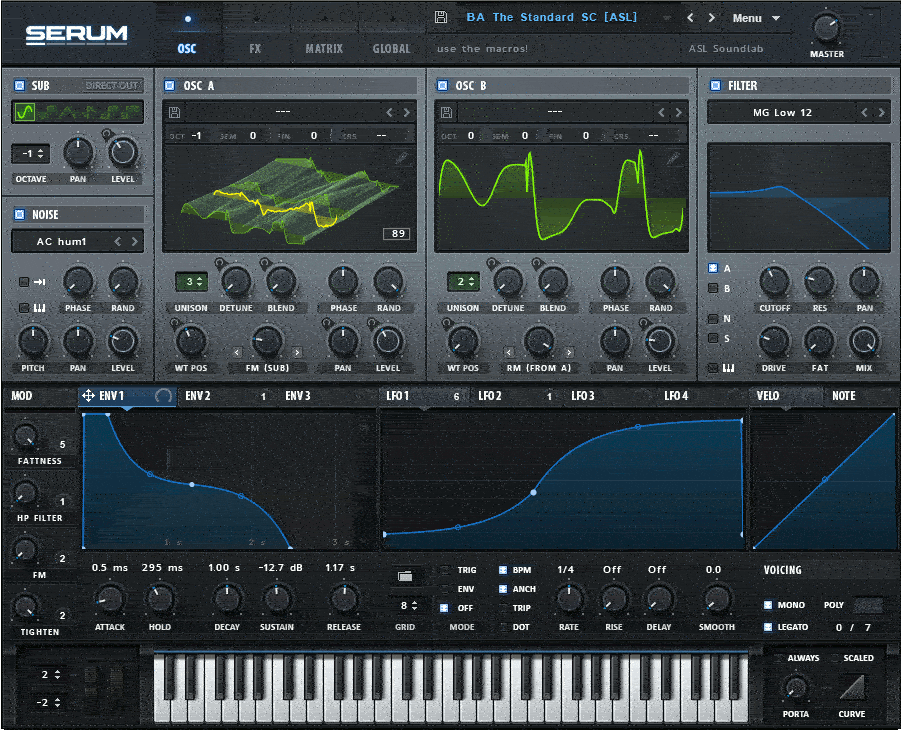
The Future of Serum
While Xfer Records has remained tight-lipped about a potential Serum 2, the original synth continues to receive updates and support. The company has also expanded its product lineup with tools like LFOTool and Cthulhu, but Serum remains the crown jewel of the Xfer catalog.
As technology advances, it’s exciting to imagine what the future holds for Serum. Whether it’s new features, expanded sound design capabilities, or even a next-generation version, one thing is certain: Serum’s legacy as a groundbreaking synth is secure.
Conclusion: A Synth That Changed the Game
Serum’s journey from a passion project to an industry standard is a testament to the power of innovation, community, and a relentless focus on quality. For producers and sound designers, Serum isn’t just a tool—it’s an essential part of the creative process. Its intuitive interface, pristine sound, and endless possibilities have made it a favorite for beginners and professionals alike.
If you haven’t yet explored Serum, now is the time to dive in. Whether you’re crafting basslines, designing textures, or experimenting with new sounds, Serum offers a world of sonic possibilities waiting to be discovered. And if you’re already a fan, you know that Serum is more than just a synth—it’s a creative partner that inspires you to push the boundaries of what’s possible.
Here’s to the past, present, and future of Serum—a synth that truly changed the game. 🎛️✨


